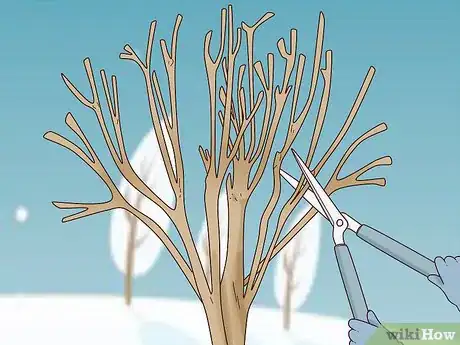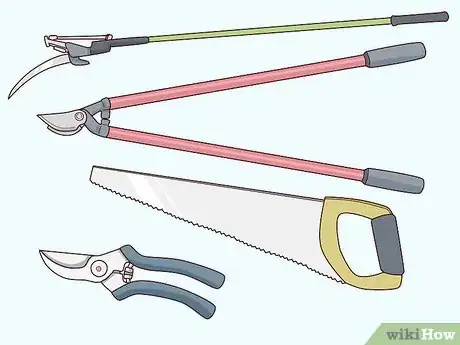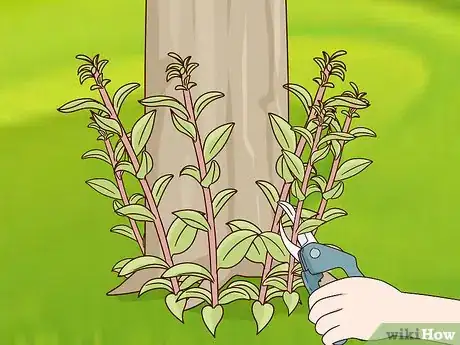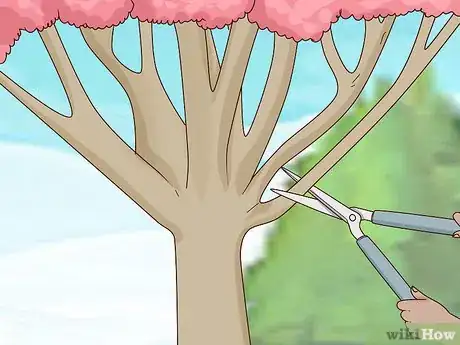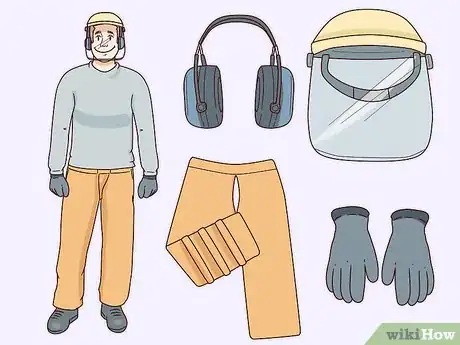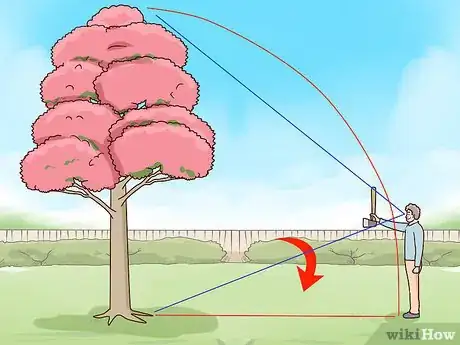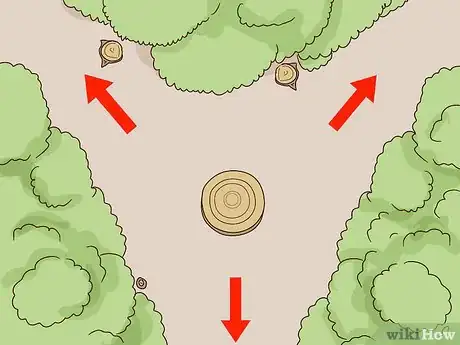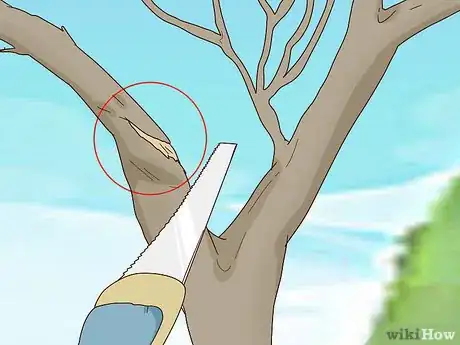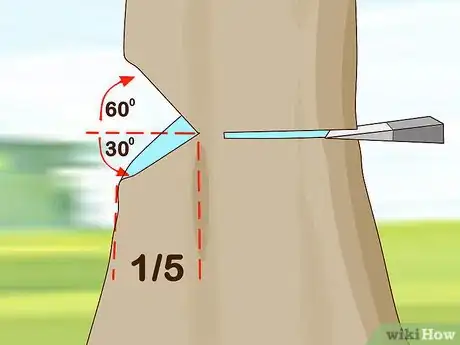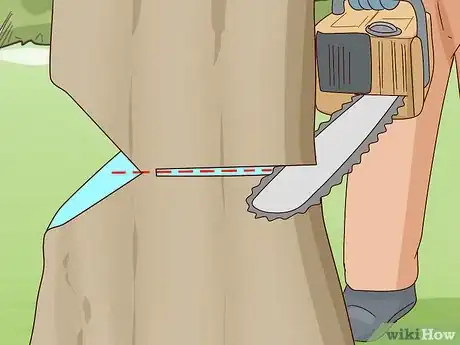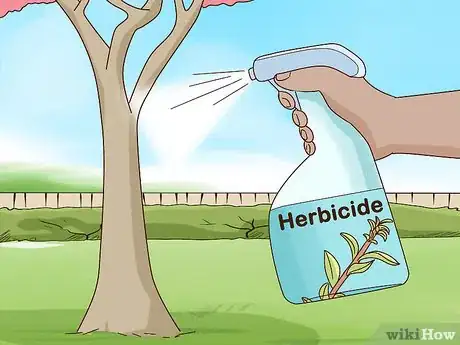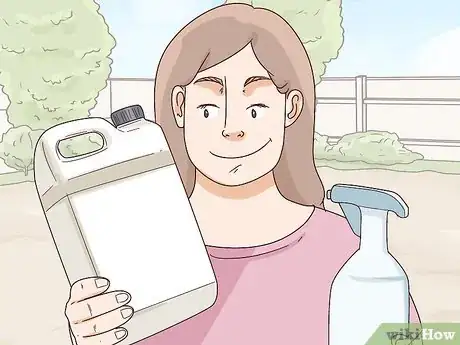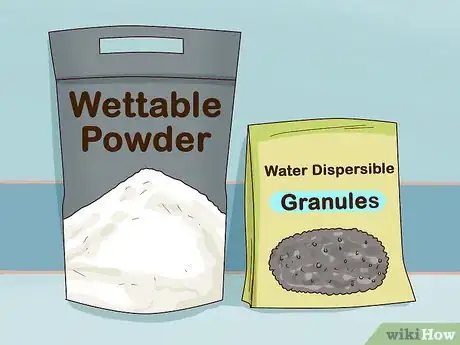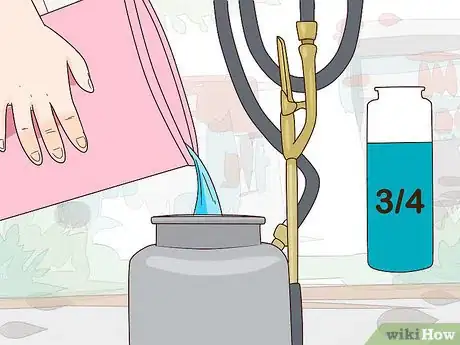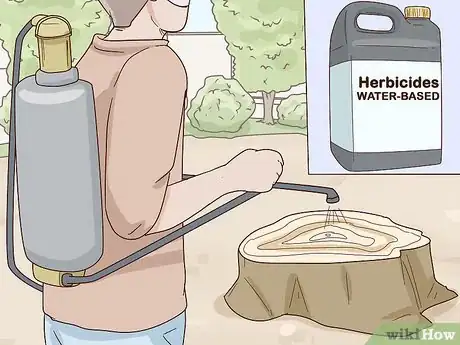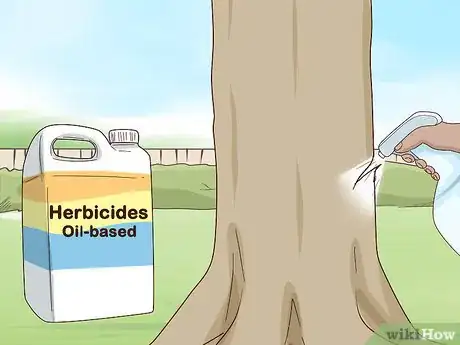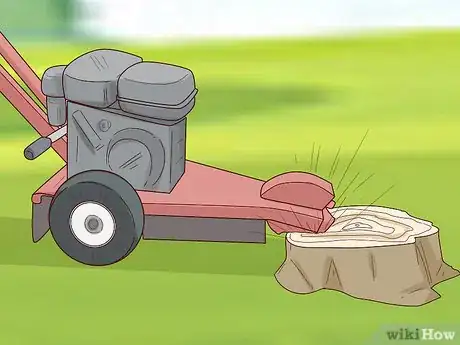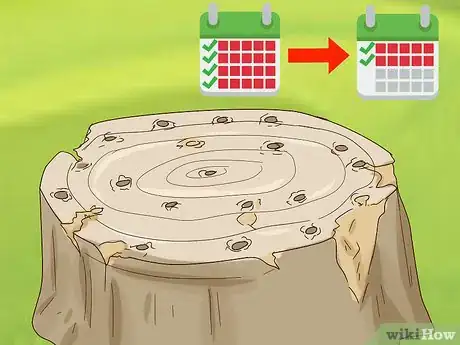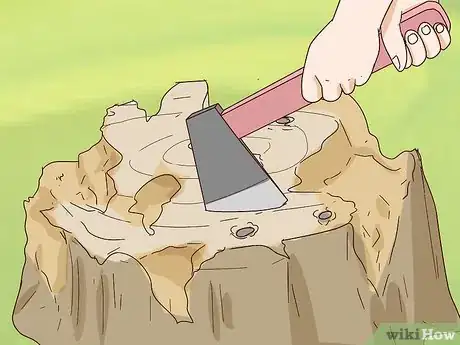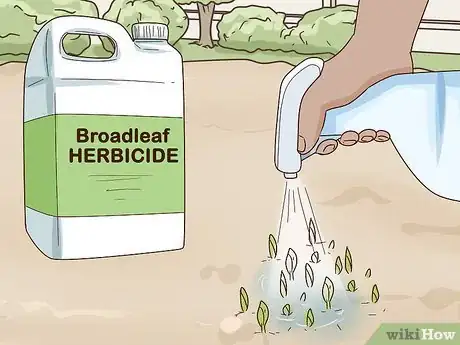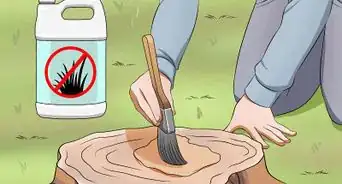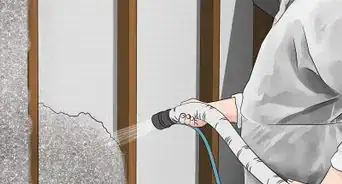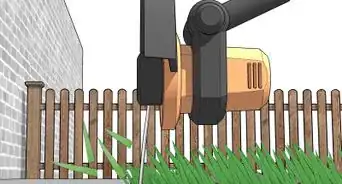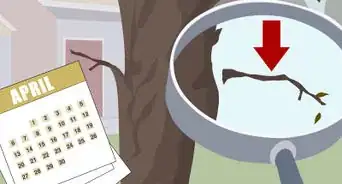This article was co-authored by Lauren Kurtz. Lauren Kurtz is a Naturalist and Horticultural Specialist. Lauren has worked for Aurora, Colorado managing the Water-Wise Garden at Aurora Municipal Center for the Water Conservation Department. She earned a BA in Environmental and Sustainability Studies from Western Michigan University in 2014.
There are 14 references cited in this article, which can be found at the bottom of the page.
This article has been viewed 46,000 times.
Crepe myrtles, also known as crape myrtles or Lagerstroemia, can give your yard vibrant injections of white, pink-purple, and red when in bloom. But when they start causing problems through unruly branches or insect infestations, they can be quite difficult to remove thanks to their drought tolerance. If you're going to effectively kill a crepe myrtle, you need to properly prune it in preparation for cutting, safely cut it to the stump, apply the right herbicide, and remove the tree stump remains.
Steps
Pruning Your Crepe Myrtle
-
1Prune your crepe myrtle in the winter or early spring. During the winter, crepe myrtles are leafless, making it easy to see all of their branches. Early spring is the latest you should prune, as after this period, they begin sending out new leaves and branches.[1] Pruning helps remove the stray branches that can pose danger and cause injury when you cut down your tree.
- Prune prior to leaf appearance or at the beginning of their growth period to make the process more straightforward and reduce clean-up time.
- The latest you should prune is May.
-
2Purchase the necessary pruning tools. Your pruning tools will depend on the size of your tree and the branches that need removing. The most common tools are hand pruners, loppers, and pole pruners.[2]
- Use hand pruners to clip twigs and branches thinner than 0.5 inch (1.3 cm) thick.
- Cut branches 0.5 to 1.5 inches (1.3 to 3.8 cm) thick using loppers.
- Remove branches more than 1 to 1.5 inches (2.5 to 3.8 cm) thick with pole pruners or a saw.
Advertisement -
3
-
4Cut side branches that extend from the base of the tree's trunks. Remove side branches extending from the main trunks, moving up higher as you prune. When the tree falls, these are the most likely to snap off and cause harm. They're also much easier to get rid of while the tree is still standing, as opposed to when it's on the ground.[5]
- Cut crossing, rubbing, and dead branches that grow at awkward angles last. Use hand pruners for the thin branches and loppers, and use pole pruners or a saw for thicker, taller branches.
Cutting to the Stump
-
1Wear the proper safety gear to protect yourself. Cutting down a tree is no small feat, and before you start, you need to wear the right protection. Always wear a logger's helmet, earmuffs, a face screen, safety glasses, thick gloves, and Kevlar chaps.[6]
- A helmet protects you from falling branches, earmuffs and a face screen protect your face and ears, and safety glasses keep the dust out of your eyes.
- Kevlar chaps stop chainsaws the instant the bar hits your leg.
-
2Estimate the felling zone using an axe. Most trees are taller than you think and can reach farther on the ground than initial estimates. By using the "axe handle trick," you can determine how far the tree is going to fall.[7]
- Hold your axe vertically at arm's length and close one of your eyes. Either walk toward the tree or back away from it until the axe is even with the treetop and the bottom even with the base.
- Your feet should be located where the treetop rests after falling. Add 1 to 2 feet (0.30 to 0.61 m) of extra room just to be safe.
-
3Cut a way for two escape routes using garden pruners. Although many crepe myrtles won't be tall enough to pose serious damage, some can reach up to 33 feet (10 m). For these trees, cut away any brush around their trunk using garden shears and lay out two escape routes on the side of the tree.[8]
- Each escape route should be around 45 degrees from the other in opposite directions. Think of the felling direction as the bottom line of a capital "Y", and the two top lines the escape routes.
-
4Examine the tree for potential problems. Before cutting down the tree, look out for loose branches, dead branches that are still attached, and buildings, fences, or power lines that are in the felling zone.[9]
- Loose or dead branches should be removed prior to cutting.
- Determine which direction the tree is leaning by looking for the side with the heaviest load/branches.
- If your felling zone contains buildings, fences, or power lines, stop here and call a professional.
-
5Create a notch cut using your axe. Using an axe, make a notch cut that is 1/5 of the way into the tree’s trunk. The bottom cut should be 30 degrees from the horizontal plane, while the top cut should be 60 degrees from it. The notch cut will be the direction the tree falls.[10]
- Always start with the top cut.
- If you meet the top notch perfectly when making the bottom cut, the wedge will drop out. If you don't, you will have to extend the cuts from the top or bottom to let the wedge drop free.
-
6Cut the tree horizontally with a chainsaw using the apex as a guide. Your felling cut should be level with the apex of your notch. Draw a line with a piece of chalk connecting both sides for a guide.
- Once the tree begins to lean, pull your saw free, hit the saw's chain break, and move to one of your escape routes.
- Keep your eye on the tree so that you can properly react if it falls in a way that conflicts with your plan.
Applying Herbicide
-
1Spray herbicides on crepe myrtle during growing season. Crepe myrtle growing season is typically between the spring and fall. During the tree's growth phase, herbicides will translocate through the plant. Using herbicides during dormant season limits injury to site of application.
- Herbicide application can come before or after cutting to the stump. But applying after is more effective, as it is more likely to reach the phloem—the light-brown "inner bark" that is located after the outer bark when moving inward towards the stump's center.
- During cool weather, dormant roots make it harder for the herbicide to make its way through the plant, reducing its effectiveness.
- Apply the herbicide to the bottom 12 to 18 inches (30 to 46 cm) of the crepe myrtle trunk.
-
2Check your mix's sprayer compatibility if you're using a branded mix. Sprayer labels should include supported branded mixes.[11]
- When tank mixes are listed, it means that the sprayer manufacturer has researched how to effectively mix the spray.
-
3Purchase mix components if you're creating your own tank mix. Purchase herbicide-mix components such as wettable powders and water dispersible granules, liquid flowables and suspensions, emulsifiable concentrate (ECs) formulations, and surfactants/solutions.
- Wettable powders are solid pesticide formulations that are dispersed in water. Water-dispersible granules are applied after they are disintegrated and dispersed in water. They take longer to disperse than wettable powders.
- Emulsifiable concentrates are pesticide solutions that contain emulsifying agents in combination with a water-insoluble organic solvent.
- Surfactants are compounds that reduce tensions between two of the following: two liquids; a gas and a liquid; a liquid and a solid.
- Never mix chemicals without knowing how much or how to mix them.
- Wear eye protection, chemical-resistant gloves, long sleeves and pants, and closed-toe shoes to protect yourself from the chemicals.
-
4Fill your sprayer tank to 3/4 full with water. After filling it with water, add your branded herbicide mix or—if you're creating your own mix—water conditioners, buffering agents, or defoamers
- Water conditioners improve the efficacy of mixes containing glyphosate and glufosinate in herbicide spray systems.[12]
- Buffering agents either facilitate herbicide activity, or facilitate or modify characteristics of a herbicide formulation.[13]
- Defoamers are added to herbicide mixes to prevent uncontrolled foaming in the spray tank.[14]
-
5Apply water-based herbicides to the phloem of your freshly cut stumps. In order for herbicides to be effective on stumps, they must reach the phloem, also known as the inner bark. When your stumps are freshly cut, this is a great time to apply herbicide. Two applications (spaced apart by around two weeks) are recommended, as crepe myrtles are persistent.[15]
- Use water-based herbicides like glyphosate or triclopyr. Triclopyr-based herbicides suppress growth, causing disruption that eventually kills the plant.
- Spray new shoots with a broadleaf herbicide.[16]
- Once you notice your stump beginning to rot and weaken, move on to stump removal.
-
6Apply oil-based herbicides to actively growing plants (optional). If your crepe myrtle is actively growing, you need to apply an oil-based herbicide that can penetrate through the tree's protective layer covering the bark. Apply to the lower portion of the stem from the soil line up to 8 to 18 inches (20 to 46 cm). You can chop actively growing trees after weakening them with herbicide application.
- Use oil-based herbicide on plants with trunks up to 6 inches (15 cm) in diameter.
Removing the Tree Stump Remains
-
1Remove the stump using a power stump grinder (optional). Using a power stump grinder is the most efficient way to remove your stump. Position the grinder near your stump, turn it on, and begin pushing it forward into the stump to grind away at its surface. Move it around the circumference of the stump to make sure you also grind the aerial roots.
- Stump grinders can cost thousands of dollars and there are other ways to remove tree stumps for a fraction of a cost. The cost-effective alternative is using chemical stump remover—a process that is outlined in the steps below.
-
2Drill 1 inch (2.5 cm) holes in the top of the stump. Using a 1 inch (2.5 cm) spade bit for your drill, drill 1 inch (2.5 cm) holes around the stump's perimeter. Be sure to go approximately 12 inches (30 cm) deep and 3 to 4 inches (7.6 to 10.2 cm) back from the stump's edge.[17]
-
3Pour chemical stump removal granules into the holes. Purchase a stump removal product from your local home hardware store. Most of these products are powdered forms of potassium nitrate, which accelerates rotting.[18]
- After filling the holes with your granules, add water into the mix.
-
4Monitor your stump over the next 4 to 6 weeks. Your stump will begin to get spongy after 4 to 6 weeks. If you have any children or pets, keep them away from the stump during this period.[19]
-
5Break the remaining rotten wood with an axe. After the stump remover has accelerated the rotting process, you can break up the remaining wood with your axe.[20]
-
6Spray shoots with broadleaf herbicide. Even after you've removed the stump, you might notice new shoot growth. Apply broadleaf herbicide to any shoots that you notice growing back.[21]
- Broadleaf herbicides are best when applied in the fall, with October being the optimal month. Broadleaf weeds are more susceptible to fall herbicide application because plants are more likely to move the herbicides down into their root and stem tissues.
Warnings
- Always wear safety gear when using a chainsaw.⧼thumbs_response⧽
- Never use a chainsaw over your shoulder height.⧼thumbs_response⧽
- Always wear personal protective equipment when you mix or spray chemicals. Wear chemical-resistant gloves, eye protection, long-sleeve shirts, pants, and closed-toe shoes.⧼thumbs_response⧽
- Never pour leftover chemicals down a storm drain or natural body of water.⧼thumbs_response⧽
- Store herbicides away from children and animals.[22]⧼thumbs_response⧽
Things You'll Need
Pruning Your Crepe Myrtle
- Garden pruners
- Loppers
- Pole pruners
Saw
Cutting to the Stump
- Logger's helmet
- Earmuffs
- Face screen
- Safety glasses
- Kevlar chaps
- Chainsaw
- Garden pruners
- White chalk
Applying Herbicide
- Herbicide sprayer
- Oil-based herbicide mix
- Water-based herbicide mix
- Broadleaf herbicide mix
Removing the Tree Stump
- Safety glasses
- Gloves
- Closed-toe shoes
- Pants
- Extension cord
- Corded drill
- 12 in (30 cm) bit extension
- Chemical stump removal product
- Herbicide sprayer
- Broadleaf herbicide mix
- Axe
References
- ↑ http://www.finegardening.com/article/pruning-crape-myrtles
- ↑ https://www.southernliving.com/garden/grumpy-gardener/what-concerns-p
- ↑ https://www.southernliving.com/garden/grumpy-gardener/what-concerns-p
- ↑ http://www.finegardening.com/article/pruning-crape-myrtles
- ↑ https://www.southernliving.com/garden/grumpy-gardener/what-concerns-p
- ↑ https://www.familyhandyman.com/landscaping/how-to-cut-down-a-tree/view-all/
- ↑ https://www.familyhandyman.com/landscaping/how-to-cut-down-a-tree/view-all/
- ↑ https://www.familyhandyman.com/landscaping/how-to-cut-down-a-tree/view-all/
- ↑ https://www.familyhandyman.com/landscaping/how-to-cut-down-a-tree/view-all/
- ↑ https://www.familyhandyman.com/landscaping/how-to-cut-down-a-tree/view-all/
- ↑ https://www.topcropmanager.com/herbicides/tips-for-herbicide-tank-mixing-16907
- ↑ https://www.astm.org/DIGITAL_LIBRARY/STP/PAGES/STP157920130157.htm
- ↑ https://www.extension.purdue.edu/extmedia/WS/WS-7.html
- ↑ https://www.extension.purdue.edu/extmedia/WS/WS-7.html
- ↑ https://agrilifetoday.tamu.edu/2017/03/09/crape-myrtle-bark-scale-study-reveals-tree-treatments-fight-pest/
- ↑ https://www.turfmagazine.com/lawn-care/5-tips-to-enhance-broadleaf-weed-control/
- ↑ https://www.familyhandyman.com/landscaping/how-to-remove-a-tree-stump-painlessly/view-all/
- ↑ https://www.familyhandyman.com/landscaping/how-to-remove-a-tree-stump-painlessly/view-all/
- ↑ https://www.familyhandyman.com/landscaping/how-to-remove-a-tree-stump-painlessly/view-all/
- ↑ https://www.familyhandyman.com/landscaping/how-to-remove-a-tree-stump-painlessly/view-all/
- ↑ https://www.turfmagazine.com/lawn-care/5-tips-to-enhance-broadleaf-weed-control/
- ↑ https://www.lawn-care-academy.com/herbicides.html
